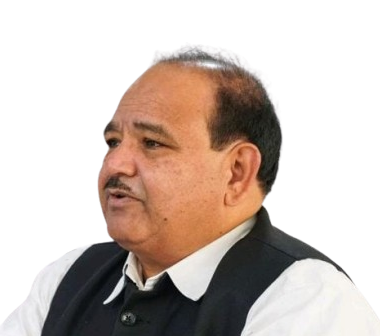
IN CONVERSATION WITH PROF. GUFRAN BEIG
Chair Professor at NIAS and Founder Project Director, SAFAR.
Academic Record:
Post-Doctoral Fellowship – NCAR, Boulder, Colorado, USA (1991)
Ph.D. in Atmospheric Physics – Physical Research Laboratory, Ahmedabad (1990)
M.Sc. in Physics – M.L. Sukhadia University, Udaipur (1983)
B.Sc. in Physics – Rajasthan University, Jaipur (1980)
Prof. Beig is currently serving as “Chair Professor” at NIAS in Indian Institute of Science campus, Bangalore. He is a well-known expert of Air Quality and Climate Change. A subject gaining importance under NET-ZERO commitment given by Govt. of India to the United Nations. His current interest lies in air quality management with scientific approach and understanding the extreme events and their linkages with climate change. He was the Founder Director of India’s first air quality forecasting framework, popularly known as “SAFAR” developed under the Ministry of Earth Sciences, Govt. of India. He is the recipient of the coveted Shanti Swarup Bhatnagar Award, India’s highest honor in Scientific discipline. He is the first Indian recipient to be conferred with the World Meteorological Organization award of the United nations. Besides other numerous awards, he is the fellow of Indian academy of sciences and Indian Meteorological Society (IMS). Prof. Beig has published 249 peer-reviewed international research papers so far, with around 10800 citations. He has also edited 8 scientific books, released 31 technical monographs and delivered more than 410 invited talks.
Air pollution is a significant crisis in India, contributing to severe health risks and environmental degradation. This G’nY blog summarises key insights from a podcast discussion with Prof. Gufran Beig, Chair Professor at NIAS and founder of SAFAR. It highlights the science of air quality measurement, its health implications, and policy responses such as the NCAP. From understanding particulate matter to addressing monitoring gaps and proposing a regional airshed approach, this interview and accompanying explanations emphasise the urgent need for collective action.
Read more
